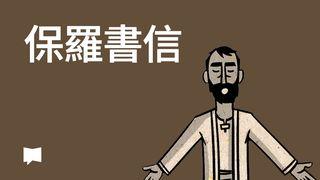Encounter: People Jesus Met, Then and Now預覽

The Thief on the Cross' Encounter
The cross is one of the most recognised symbols in the world, appearing on churches, buildings, flags, jewellery, and the branding of many organisations. Today, we understand it as a symbol of the Christian faith and the greatest act of love.
However, in the time when crucifixion was practiced, the cross represented something truly horrific. To die on a cross meant enduring a slow, painful, and humiliating death. The Romans used it extensively to assert their power and serve as a public warning against defying their authority.
In Luke’s Gospel, the encounter between Jesus and the two criminals is remarkable. On the worst day of their lives, they hang side by side, facing a slow and agonising death. One scoffs and mocks Jesus, while the other recognises something different about Him.
His simple profession of faith is met with Jesus’ incredible promise: “Truly I tell you, today you will be with me in paradise” (Luke 23:43). This is a powerful reminder of God’s love and grace.
The thief acknowledges his guilt, admitting he deserves his punishment (v. 41), yet Jesus offers him grace—freely and without qualification.
All who ask for forgiveness are forgiven. All who reach out to Jesus will receive him.
Sin is central to the Christian story because it creates the very need for God’s grace to take root and grow. The reality of sin means that everyone has a place in God’s story—no one is too far from His love.
The thief on the cross represents the worst kind of person on the worst and final day of their life. If he could receive Jesus’ forgiveness, then there is hope and opportunity for everyone.
For many years, Dwayne Jack represented the worst kind of person. He was schooled on the streets and lived a life of crime, deceit, fraud and violence.
“I was a proper rebel. I was a menace” he said.
The turning point of his story begins with a moment that he describes as his "dark night of the soul".
“And that's why Jesus comes into the world. Not to give us better self-esteem, not just to give us trauma recovery, not just to give us ways of being a better you. So you can be all you can be. Ultimately, Jesus comes to deal with the sin problem. The Son goes to the cross not with reluctance, not resenting His dad for making him do it. He goes to the cross for the joy that was set before Him.” – Michael Bird
The cross as a symbol of intimidation and coercion by the Romans is transformed by Jesus into the symbol of forgiveness and love.
Anyone who reaches out to Jesus can have their sin dealt with - no matter what kind of rebel or menace.
As it says in Romans 10:11-13:
“As Scripture says, “Anyone who believes in him will never be put to shame.” For there is no difference between Jew and Gentile—the same Lord is Lord of all and richly blesses all who call on him, for, “Everyone who calls on the name of the Lord will be saved.””
Application
When you hear the word “menace” or “rebel” who comes to mind? Is it you? Or is it someone you know? Pray for that person and be reminded that God’s grace is extended to them and His love reaches out to them. New life in Christ is always available to those who want forgiveness.
關於此計劃

The Gospels tell remarkable stories of encounters with Jesus—moments that brought healing, transformation, and purpose to those on society’s margins, truth-seekers, and the desperate. In this Bible Reading Plan, Karl Faase explores ten such encounters, showing how meeting Jesus changes lives. But these encounters aren’t just historical. This plan also shares modern-day stories of lives transformed by God. Based on the Australian documentary series Encounter, this resource invites you to reflect on how an encounter with God could impact you or someone you love.
More









